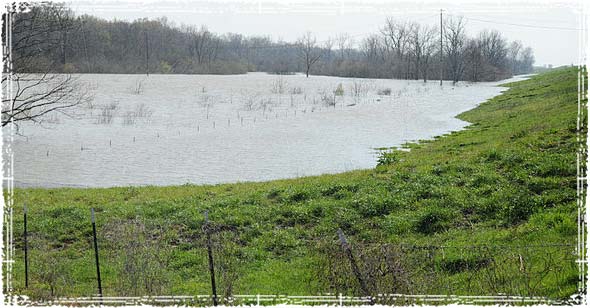Over the coming weeks, we’re going to take a look at one of this country’s largest threats, our failing infrastructure. This country’s infrastructure has become a nationwide patchwork of repairs that have been performed with little accountability and almost no oversight. In fact, most officials don’t even know how large the problem is since there’s no central agency tasked with monitoring our national infrastructure.
One of the first sectors we are going to look at is our nation’s Dams and Levees; I think they highlight how large of a problem we’re facing and shows how our government has allowed the problem to spiral out of control.
Our Nation’s Failing Levee System

During Hurricane Katrina, over 50 levees that protect the city of New Orleans failed, which caused tens of billions of gallons of flood water to come rushing into the city. Economic damages were estimated at over $200 billion and more than 1,800 people lost their life.
How quickly our nation forgets; since August 2005 when Hurricane Katrina hit New Orleans, very little has been done to address our nation’s deteriorating Levee Systems. Although most people dismiss the problem as something that can only happen in New Orleans, the fact is, levees can be found in every state in the United States.
It’s estimated that nearly 14 million people are currently living behind one of these barriers, and at least one-third of our nation’s communities with a population of 50,000 or higher rely on a levee system to protect their community from flooding.
Over 100,000 miles of levees are built in all 50 states; these barriers protect homes, businesses and critical infrastructure like highways and power plants from flooding. The problem is, most of these levees are over 50 years old, and many were never built to last longer than a couple of decades. In fact, according to the American Society of Civil Engineers, the reliability of our nation’s levee system is a serious problem.
During a recent survey, the USACE found only 8% of our nation’s levees to be in acceptable condition. Even more troubling, is the fact that no one seems to know where a good portion of the nation’s levees are even located.
According to the Army Corp of Engineers, there could be as many as 100,000 miles of levees that have never been inspected. In an interview with NBC News, Eric Halpin, the Army Corps’ special assistant for dam and levee safety and vice chairman of the levee safety committee said, “The reality is, we don’t know how many levees are out there.”
Of the estimated 10% have been inspected, 11.6 percent were rated likely to fail during a flood.
The Dangers of a Levee Failure
As we witnessed during Hurricane Katina, the consequences of a levee failure can be catastrophic for those living in the affected areas. Since there’s so much uncertainty about the location, the age, and even the condition of our nation’s levee system, we face a growing threat that has left many communities more vulnerable than they realize.
Preparing for Disaster
The first step you should take is to try to determine whether or not your community is being protected by a levee system. Although many of these systems are unknown to even local officials, you should be able to determine whether or not your general area lies in a known flood zone.
If you feel you may be one of the estimated 14 million Americans who lives in one of these danger zones, you should think about the following recommendations.
Gather Information: Research what the possible effects of flooding could be in your community, and determine what it will take to evacuate your home should it become necessary.
Make a Plan: Develop an emergency evacuation plan for your family, and make sure everyone in your family, or group, knows exactly what this plan is and how to get a hold of each other during a disaster.
Gather Your Emergency Supplies: Just like preparing for any other sort of disaster, you should always have a Bugout Bag that you can quickly grab should you need to evacuate. This bag should be filled with everything you need to survive an extended stay away from your home.
Safeguard Your Records: If you live in a potential flood zone, make sure you keep all of your records in a safe place that’s not prone to flooding. You may also want to carry a digital backup of your records on a small thumb drive that can be carried inside your bug out bag.
Protect Your Home: If a flood warning is issued in your area, immediately start to take action. Move your valuables to the highest point in your home, turn off all gas lines, turn off your electricity at the breaker or fuse box, sand bag your home, and of course be ready to leave immediately.



If I lived below the water line near a levee, I would not still be living there. Period.
The government will not be able (or willing) to fix them and so starts forced migration of the citizens.
The preparations above is like the little boy sticking his finger in the dyke. Time to seriously rethink G.O.O.D.
If I had to live behing a levee, I would darn sure I was at least walking along it on a regular basis looking for damage. You may be the only person inspecting it.